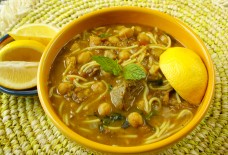The Significance of World Keffiyeh Day
Yasser Arafat wearing the keffiyeh – photo from thetimes.co.ukBY: Nisreen Eadeh/Arab America Contributing Writer
The Palestinian keffiyeh is a black and white checkered scarf that has taken on a significant meaning in the past few decades. Traditionally, the keffiyeh was worn by farmers as a tool for staying cool while working in the heat, staying warm while working in the rain, or protecting their faces from sand in the wind. These farmers used the keffiyeh as a symbol for Palestinian independence and heritage while under Ottoman and British rule in the early twentieth century. The keffiyeh maintained its symbolism through the 1960s because Palestine Liberation Organization leader, Yasser Arafat, wore the scarf on a daily basis. As a representative of Palestine in its fight for freedom from oppression and displacement, Arafat made the keffiyeh a national symbol of justice for Palestinians.
Today, the keffiyeh is more than a scarf – it is a Palestinian badge and political fashion statement. People all over the world in the Palestinian Diaspora wear the keffiyeh to show national pride. Artists, musicians, activists, and designers can be found wearing the keffiyeh, too, offering support to Palestinians in their struggle for freedom.
World Keffiyeh Day was started by Solidarity for Human Rights, a Montreal-based organization with university chapters across Canada. The group started World Keffiyeh Day to bring awareness and solidarity to Nakba Day, which is May 15. Palestinians refer to May 15 as the Nakba (“catastrophe” in English) because it is when “approximately 750,000 Palestinians fled or were forced into exile by Israeli troops” because they weren’t Jewish and they owned most of the land in Palestine. By May, Israel’s displacement project was halfway done, and it officially declared independence and became a state.
Unfortunately, with such high demand for the scarf from all around the world, Chinese companies entered the keffiyeh production market, causing all but one keffiyeh factory in Palestine to close down. The last Palestinian keffiyeh factory is called the Hirbawi Textile Factory located in Hebron. Its website, www.kufiya.org, includes history, photos, and information for purchasing keffiyehs. Hirbawi delivers worldwide and works in tandem with the Boycott, Divestment, and Sanctions (BDS) movement to promote Palestinian-made goods.
The black and white checkered print can be found on all kinds of products today, such as shirts, headbands, hijabs, purses, jewelry, socks, wallets, keychains, and more. Although Hirbawi does not make many of those products, they give users the option to express themselves uniquely. But the most popular way to show solidarity with Palestine is through the original scarf, worn around the neck and shoulders.
The keffiyeh is so popular that nationalist Palestinian songs were written about the checkered pattern and the hope it gives Palestinians. Watch below as 2013 Arab Idol Winner Mohammed Assaf from Gaza sings 3ali el kofia (“On the Keffiyeh” in English).







